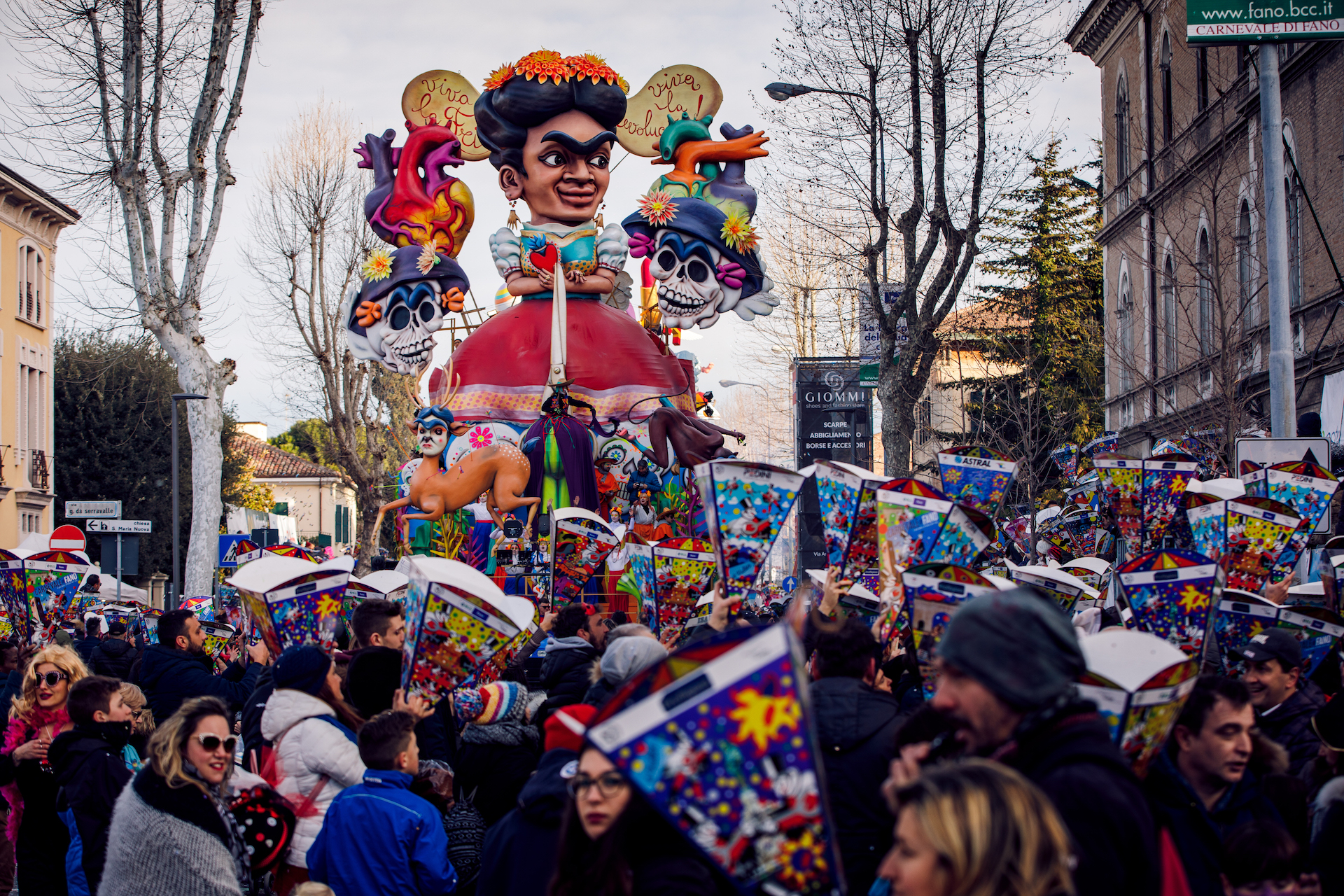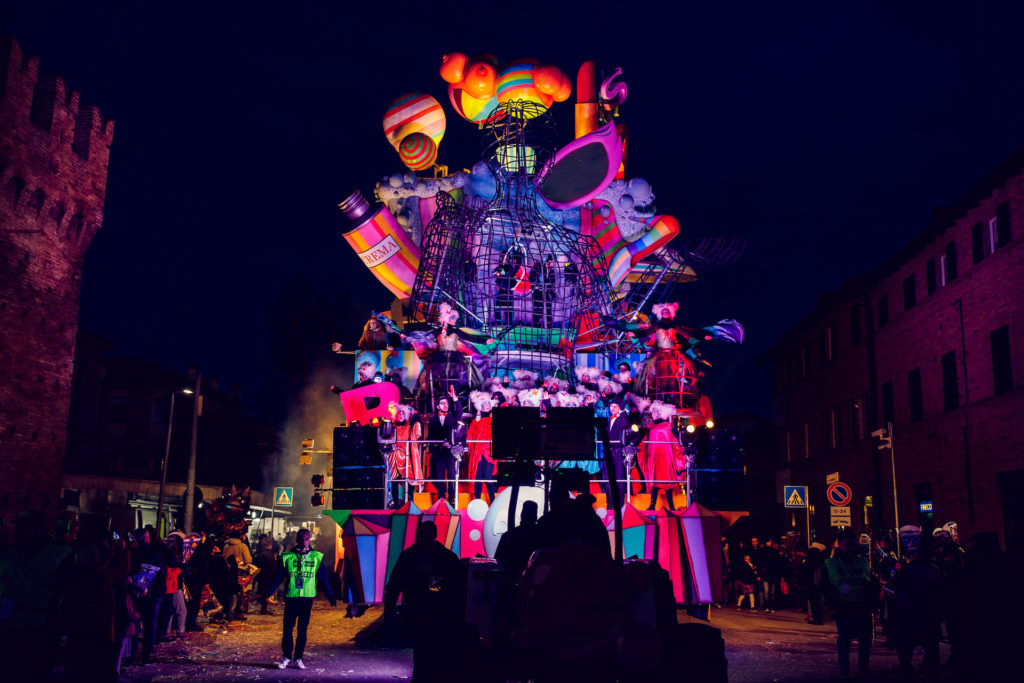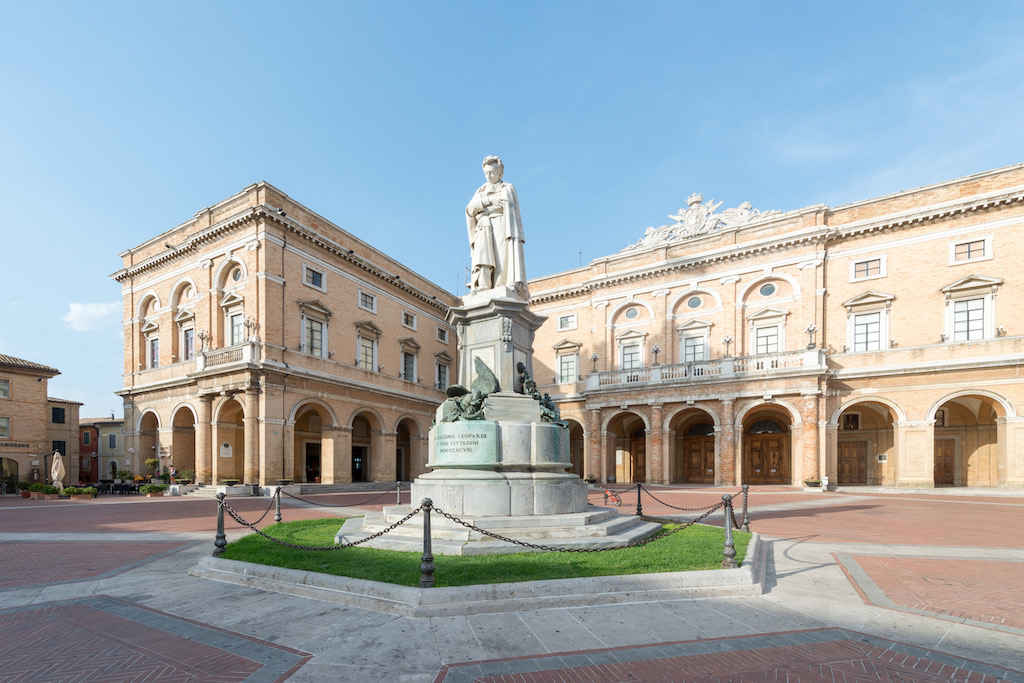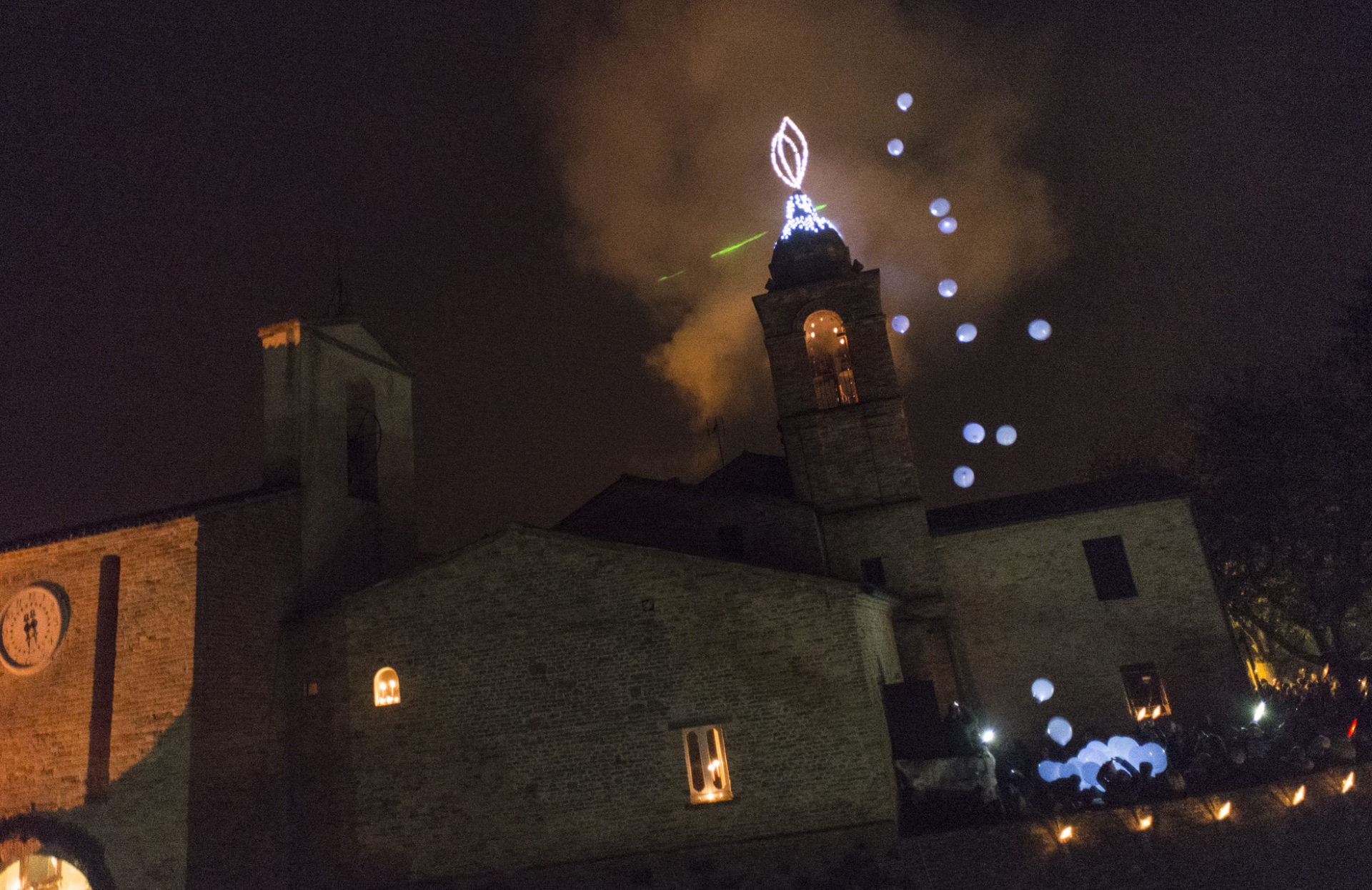Fano – The most ancient Carnival in Italy.

Fanum Fortunae, “the Temple of Fate”. A place as mysterious as the whimsical entity it was dedicated to, to which it owes its name and whose remains it still hides, together with the legendary Basilica which Vitruvius decided to build here. Mysterious are also the masks crowding the Carnival, hidden faces and phantasmagorical allegoric chariots parading during the days of a celebration deeply rooted in Fano’s history. Mysterious and fascinating is the sea facing the city, whose boundless depths hide treasures which Fano’s fishermen know better than anybody else, having brought them back ashore. Fano is mysterious, and yet it lets all of its beauty be discovered, now that it is a modern and progressive city, aware of its riches and working incessantly to promote them. A city caring for the quality of life of its citizens, especially of children, for whom a project is running since many years which made it “the city for young girls and boys”, rich with activities and equipment meant for young citizens.

Carnival, in Fano, is more than just a celebration: it is a cultural event the whole city identifies with, because Fano boasts the most ancient Carnival in Italy, as is testified by a still available manuscript dated A.D. 1347. Ever since, Carnival was regularly celebrated. A committee passionately organizes the event every year, assisted by masters in the ancient art of papier-mâché who build giant mobile structures, always dealing with new issues and topics. The chariots parade in the streets of Fano, crowded with dumbfounded people, while masked children laugh and collect the candies thrown down during the “Getto” (“the throw”), consisting of almost two thousand kilos of toffees and chocolates “seeded” from the top of chariots, an act symbolically linked to the agricultural sowing, as a wish of prosperity that makes Fano’s also the sweetest Carnival in Italy. In the parade, stands out the “Vulòn” chariot, a local carnival icon recalling the ill-famed Napoleonic criers (their announcements began by saying “Nous voulons”, “we want”) who became the mask of the arrogant braggart and concludes his parade on Mardi Gras, when he is put on fire to take winter away with him. The parade is accompanied by a folk band of “Musica Arabita” (“angry music” in dialect) playing such bizarre instruments as cowbells, coffee machines, umbrellas and other unlikely objects.


